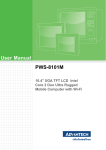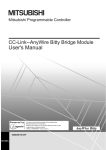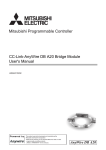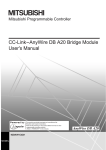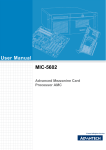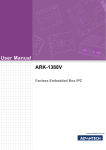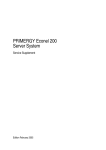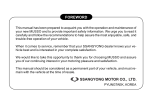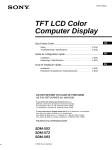Download Rugged Tablet PC X10D User Manual
Transcript
Rugged Tablet PC X10D User Manual Ver 1.0 X10D User Manual Table of Contents Preface ................................................................ i CE Conformity Statement .............................................. i FCC Compliance Statement ........................................... ii Copyright Statement ...................................................iii Safety Instructions ..................................................v Battery Safety ........................................................... vi Battery Pack Caution ............................................... vi Battery Charge Notice .............................................. vi Storage and Safety Notice ........................................ vii Rugged and Ready to Go ...........................................1 Symbols Used in this Manual ...........................................1 Product Features.........................................................1 Package Contents ........................................................2 Optional Accessories ....................................................2 Exploring the X10D ......................................................3 Front View.............................................................3 Right View ................................................................4 Left View with Telephone Jack ....................................5 Left View with 3G SIM Card Slot (optional) ......................5 Rear View..............................................................6 Bottom View ..........................................................6 Getting Started ......................................................7 Inserting and Removing the Battery ..................................7 Connecting the Power...................................................7 Turning On for the First Time If you are using Windows XP Professional Embedded .................................................8 Recovering from a System Crash If you are using Windows XP Professional Embedded ............................................... 11 Recovering from a System Crash If you are using Windows XP Embedded............................................................... 11 Inserting a Memory Card.............................................. 13 X10D User Manual Removing a Memory Card............................................. 14 Inserting a PCMCIA Card .............................................. 15 Removing a PCMCIA Card ............................................. 16 Inserting 3G SIM Card (optional)..................................... 17 Removing 3G SIM Card (optional) ................................... 17 Making Connections ................................................... 18 Connecting to a Monitor........................................... 18 Connecting USB Devices ........................................... 18 Connection to a Network.......................................... 19 Connecting to a Telephone Line ................................. 19 Connecting Headphones........................................... 19 Connecting a Microphone ......................................... 20 Turning On .............................................................. 20 Controlling the X10D .................................................. 21 Using the Touch Screen ........................................... 21 Using the Control Panel Buttons ................................. 23 Using the On-Screen Keyboard ................................... 24 Configuring the Function Buttons................................ 24 Adjusting Screen Brightness ...................................... 25 Adjusting the Volume.............................................. 25 Wireless Connections............................................. 27 WiFi Connection........................................................ 27 Configuring a New Wireless Network............................ 29 Bluetooth Connections ................................................ 31 Setting Up Bluetooth............................................... 31 GPRS Connection (optional) .......................................... 33 GPS Connection (optional) ........................................ 34 Advanced Settings................................................. 35 Configuring Touch Screen Function ................................. 35 Checking Battery Status .............................................. 36 Power Options ...................................................... 37 Maintenance ............................................................ 38 Maintaining the Battery ........................................... 38 X10D User Manual Maintaining the LCD Display ...................................... 38 Cleaning the X10D.................................................. 38 Appendix ............................................................ 39 Specifications........................................................... 39 Optional Accessory .................................................... 42 Tablet PC Docking.................................................. 42 Docking Views....................................................... 42 Connecting Power to the Docking ................................... 43 Desk Docking Specifications .......................................... 43 Handstrap and Shoulder Strap ....................................... 44 Tablet PC Holster ...................................................... 46 Vehicle Mount .......................................................... 47 Vesa Mount.............................................................. 48 X10D User Manual Preface CE Conformity Statement Radio products with the CE alert marking comply with the R&TTE Directive (1999/5/EC) issued by the Commission of the European Community. Compliance with this directive implies conformity to the following European Norms (in brackets are the equivalent international standards). • EN 60950-1 (IEC60950-1) - Product Safety • EN 300 328 Technical requirement for radio equipment • ET S301 489 General EMC requirements for radio equipment Products that contain the radio transmitter are labeled with CE alert marking and may also carry the CE logo. i X10D User Manual FCC Compliance Statement This device complies with part 15 of the FCC Rules. Operation is subject to the following two conditions: 1. This device may not cause harmful interference; 2. This device must accept any interference received, including interference that may cause undesired operation. CAUTION! Exposure to Radio Frequency Radiation. The radiated output of this device is far below the FCC radio frequency exposure limits. Nevertheless, the device shall be used in such a manner that the potential for human contact during normal operation is minimized. When connecting an external antenna to the device, the antenna shall be placed in such a manner to minimize the potential for human contact during normal operation. In order to avoid the possibility of exceeding the FCC radio frequency exposure limits, human proximity to the antenna shall not be less than 20cm (8inches) during normal operation. This equipment has been tested and found to comply with the limits for a Class B digital device, pursuant to part 15 of the FCC Rules. These limits are designed to provide reasonable protection against harmful interference in a residential installation. This equipment generates, uses and can radiate radio frequency energy. If this equipment does cause harmful interference to radio or television reception, which can be determined by turning the equipment off and on, the user is encouraged to try and correct the interference by one or more of the following measures: ii However, there is no guarantee that interference will not occur in a particular installation. If this equipment does cause harmful X10D User Manual interference to radio or television reception, which can be determined by turning the equipment off and on, the user is encouraged to try to correct the interference by one or more of the following measures: • Reorient or relocate the receiving antenna • Increase the separation between the equipment and receiver • Connect the equipment into an outlet on a circuit different from that to which the receiver is connected • Consult the dealer or an experienced computer technician for help Copyright Statement © Copyright 2007 ACA Digital Corporation, All Rights Reserved. All rights reserved. This manual is protected by copyright and distributed under licenses restricting its use, copying and distribution. No part of this manual may be reproduced in any form, electronic or otherwise, without the express permission of ACA Digital Corporation. This product features software manufactured by Advanced Convergence Alliance, along with other third party software. All described herein shall not be distributed, modified, reverse engineered, or reproduced in any manner without the prior permission of ACA Digital Corporation or of the other third parties, to whom the software rights belong. All other product names, trademarks or logos mentioned herein and are the property of their respective owners. iii X10D User Manual Safety Instructions Use the following safety guidelines to help protect yourself and X10D. • Do not attempt to service the X10D yourself. Always follow installation instructions closely. • Be sure that nothing rests on the AC adapter's power cable and that the cable is not located where it can be tripped over or stepped on. • Do not cover the AC adaptor with papers or other items that will reduce cooling; also, do not use the AC adapter while it is inside a carrying case. • Use only the AC adapter, power cord, and batteries that are approved for use with this X10D. Use of another type of battery or AC adapter may cause risk of fire or explosion. • If you use an extension cable with the AC adapter, ensure that the total ampere rating of the products plugged in to the extension cable does not exceed the ampere rating of the extension cable. • When you move the X10D between environments with very different temperature and/ore humidity ranges, condensation may form on or within the X10D. To avoid damaging the X10D, allow sufficient time for the moisture to evaporate before using the X10D. • When you disconnect a cable, pull on its connector or on its strain relief loop, not on the cable itself. As you pull out the connector, keep it evenly aligned to avoid bending any connector pins. Also, before you connect a cable make sure both connectors are correctly oriented and aligned. CAUTION: To reduce the risk of fire, use only No.26 AWG or larger (e.g., 24 AWG) UL Listed or CSA Certified Telecommunication Line Cord. v X10D User Manual Battery Safety RTC Battery Caution RISK OF EXPLOSION IF BATTERY IS REPLACED BY AN INCORRECT TYPE. DISPOSE OF USED BATTERIES ACCORDING TO THE INSTRUCTIONS. • Do not place the battery incorrectly as this may cause danger of explosion. • Dispose of used batteries according to the manufacturer's instructions. • Do not dispose of batteries in a fire. They may explode. Check with local authorities for disposal instructions. Battery Pack Caution • The battery used in this device may present a risk of fire or chemical burn if mistreated. Do no disassemble, heat above 50°C, or incinerate. Replace battery with 46-12381-030 Liion 11.1V 4800mAh Cell Panasonic SMP only. Use of another battery may present a risk of fire or explosion. • Dispose of used batteries according to local disposal regulations. Keep away from children. Do not disassemble and do not dispose of in a fire. Battery Charge Notice It is important to consider the environment temperature whenever you are charging the Lithium-Ion battery pack. The process is more efficient at normal room temperature or slightly cooler. It is essential that you charge batteries within the stated range of 0°C to 50°C. Charging batteries outside of the specified range could damage the batteries and shorten their charging life cycle. vi X10D User Manual Storage and Safety Notice Although charge Lithium-Ion batteries may be left unused for several months, their capacity may be depleted due to the build up of internal resistance. If this happens they will require recharging prior to use. Lithium-Ion batteries may be stored at temperatures between -20°C to 50°C, however they may be depleted more rapidly at the high end of this range. It is recommended to store batteries within normal room temperature ranges. vii X10D User Manual viii X10D User Manual Rugged and Ready to Go Congratulations on your purchase of the X10D Rugged Tablet PC. This product combines rugged design with reliable performance and powerful functionality to best suit all your needs, in a wide range of working conditions. This user manual outlines all you need to know to set up and use your X10D. If you have any further questions or queries, contact our technical support team via our website: www.aca-digital.com. Symbols Used in this Manual Warning Note Denotes information that must be observed. Failure to do so may result in personal harm or damage to the product. Denotes useful information that should be noted to ensure you get the most out of the product. Product Features • • • • • • • • Rugged design, up to military standard (MIL-STD-810F) Efficient Core 2 DUO processor Durable, shock-resistant magnesium alloy housing Built-in WLAN/Bluetooth/GPS/GPRS functions IP65 compliant & built to withstand a 3 foot drop Intel Core 2 DUO processor 10.4” SVGA / XGA TFT LCD I/O ports for expansion 1 X10D User Manual Package Contents Ensure all the following items are present when you receive your X10D. If any of these items are missing, contact your vendor immediately. Note • • • • • • Screens used in this manual are for illustrative purposes only. Actual screens may vary based on your product version. X10D Tablet PC AC power adaptor Power cord Battery Stylus CD Optional Accessories • • • • • 2 Desk Docking Hand Strap and Shoulder Strap Holster Vehicle Mount Vesa Mount X10D User Manual Exploring the X10D Front View 1 2 3 1 2 3 4 5 6 7 8 9 4 0 Tab ESC 5 F1 F3 F2 6 7 8 9 10 No. Component 1 Microphone 2 Touch-sensitive display (responds to stylus or finger) 3 Power button 4 Number / Tab / Esc buttons 5 4-Way navigation button with integrated enter button 6 Function buttons 7 Brightness / volume button 8 Keyboard button 3 X10D User Manual No. Component Status LEDs: 9 10 Battery charge LED: Off: power off Solid Green: green lights on when charging in power off mode, lights off when finish charging. Blinking Green: AC power on & battery is charging in power on mode. Solid Yellow: power on, battery low Blinking Yellow: power on, battery critical low HDD activity LED: Green when HDD is accessed WLAN connection status LED: Off: No RF signal / No LAN connection Solid Green: WLAN Activated Blinking green: TX/RX Transmission Speakers Right View 1 4 No. Component 1 Serial ports 2 VGA port 3 USB ports 2 3 X10D User Manual Left View with Telephone Jack 1 2 34 5 6 7 Left View with 3G SIM Card Slot (optional) 1 2 34 5 6 7 No. Component 1 PC card slot (PCMCIA) 2 Compact Flash card slot 3 Headphone jack 4 Microphone jack 5 Telephone line jack/3G SIM card slot (optional) 6 RJ45 jack (for network cables) 7 DC-in jack 5 Rear View 1 2 No. Component 1 Stylus 2 Battery compartment cover Bottom View 1 No. Component 1 Docking connector X10D User Manual Getting Started Inserting and Removing the Battery Insert the battery as shown, and secure the battery compartment door with the seven screws provided. Note: The arrow markings on the battery indicate the direction in which it should be inserted. Repeat the above steps in reverse to remove the battery. Connecting the Power Before you can use your X10D, you must fully charge the battery. Connect the power adapter as shown and leave to charge for a minimum of 4 hours before use. 7 X10D User Manual Turning On for the First Time If you are using Windows XP Professional Embedded When you first turn on the X10D, the following setup screens will appear. Follow these instructions to validate your version of Windows XP and set up your system correctly. 1. The Welcome screen appears. Tap Next to continue. 2. Tap Yes, I accept to agree to the terms and conditions. Tap Next to continue. 3. Enter the 25-digit product key to validate your copy of Windows. Tap Next to continue. 8 X10D User Manual 4. Enter a name to identify your X10D. This the name by which it will be recognized on all connected networks. You can also enter a description if required. Tap Next to continue. 5. Enter an administrator password and re-confirm. Tap Next to continue. 6. Choose whether or not to make the X10D part of a domain. If so, enter the domain name (ask your system administrator for details). Tap Next to continue. 7. Choose whether or not to activate your copy of Windows immediately or at a later date (we recommend you activate the software immediately). Tap Next to continue. 9 X10D User Manual 8. You can now configure your internet connection. Tap Yes, help me connect to the Internet to run the Internet Configuration Wizard. Tap Next to continue. 9. Enter the names of other users of your X10D. You can add up to five users. Tap Next to continue. 10. Tap Finish to complete the setup. 10 X10D User Manual Recovering from a System Crash If you are using Windows XP Professional Embedded In the unlikely event that your X10D should crash, do the following to re-boot your system. 1. Press the power button to turn on the X10D. During bootup, PRESS UP KEY TO RUN RESTORE... is displayed. Press the up arrow button. 2. The recovery software screen appears with the message ‘Are you sure you want to recover the partition now?’. Press Enter to confirm. The recovery operation starts. Should you have any further problems, contact technical support for assistance. Recovering from a System Crash If you are using Windows XP Embedded Note If you are using the Compact Flash memory card for data storage, your X10D will follow the CF recovery procedures to re-boot your system. Follow these steps to perform a recovery procedure using a USB flash drive should your system crash: 1. Download the FORMATUPD.EXE file to your local drive (C:\). 2. Connect a USB flash drive to your computer. 11 X10D User Manual 3. 4. 5. 6. Click Start > Run and type cmd in the command box. Type cd\ and press Enter. Type FORMATUFD F: /y Copy the files from the Windows XPE Recovery folder on your local drive to the USB flash drive. 7. Connect the USB flash drive and a keyboard to your X10D and turn on the computer. 8. Press the Del key repeatedly during boot up to enter the BIOS screen. 9. Highlight Advanced BIOS Features and press Enter. 10.Highlight Hard Disk Boot Priority and press Enter. 11.Highlight your USB flash drive from the list and press + to move it up until it is at the top of the list. 12.Press F10 to exit the screen. 13.Highlight Save & Exit Setup and press Enter. 14.Press Y to save and exit when the confirmation message appears. 15.The system will now enter recovery mode. Click OK twice to continue. 16.Once the process is complete, click Quit, remove the USB flash drive and the system will restart automatically. 12 X10D User Manual Inserting a Memory Card You can insert a Compact Flash memory card to store data, which needs to be later transferred to another machine, or to simply expand the storage capacity of the X10D. You can use Compact Flash cards up to 2GB in size. 1. Open the memory card compartment cover. 2. Insert the Compact Flash card, until it clicks into place. 3. Close the memory card compartment cover. 13 X10D User Manual Removing a Memory Card 1. Open the memory card compartment cover. 2. Press the Compact Flash card inwards, until it clicks. 3. Release and the card will pop out. 4. Remove the card and close the memory card compartment cover. 14 X10D User Manual Inserting a PCMCIA Card You can also insert a PCMCIA card to store and transfer data between computers with compatible PC card capabilities. 1. Open the memory card compartment cover. 2. Insert the PCMCIA card, until it clicks into place. 3. Close the memory card compartment cover. 15 X10D User Manual Removing a PCMCIA Card 1. Open the memory card compartment cover. 2. Press the PCMCIA card switch inwards until the card pops out. 3. Remove the card. 4. Close the memory card compartment cover. 16 X10D User Manual Inserting 3G SIM Card (optional) 1. Open the left side cover where 3G SIM card slot is located. 2. Make sure the system is off and push the SIM card into the slot with the metallic part facing up and the clipped corner facing outward until it clicks into place. 3. Close the cover. Removing 3G SIM Card (optional) 1. Slightly push the SIM Card inwards to pop it out. 17 X10D User Manual Making Connections Connecting to a Monitor You can connect the X10D to an external monitor for enhanced viewing. Connect one end of a VGA cable to the VGA port on the right side of the X10D. Connect the other end to the VGA port on the monitor. Connecting USB Devices You can connect peripheral devices, such as a USB keyboard and mouse, as well as other wireless devices using the USB ports on the right side of the X10D. You can also connect directly to another PC using the USB ports. 18 MOLEX MOLEX X10D User Manual Connection to a Network You can connect to either a home or work network using the RJ45 port. Connect one end of the network cable to the RJ-45 port on the left side of the X10D and the other to your network hub or wall socket. Connecting to a Telephone Line If you are accessing the Internet via a regular telephone line, you can connect the X10D using the telephone jack on the left side of the X10D. Connecting Headphones You can connect a pair of headphones using the headphone jack on the left side of the X10D. 19 X10D User Manual Connecting a Microphone The X10D features and in-built microphone, but you can connect an external microphone if needed. Connect the microphone to the microphone jack on the left side of the X10D as shown. Turning On Press and hold the power button to turn on the X10D. 20 X10D User Manual Controlling the X10D Using the Touch Screen The X10D is equipped with touch screen technology, for ease of use when you are on the go. Simply use the pen to select icons and run applications. Remove the pen from its holder at the rear of the X10D and you are ready to go. Calibrating the Touch Screen To calibrate the touch screen, tap Start > All Programs > PenMount Universal Driver > PenMount Control Panel to open PenMount Control Panel or tap the pointer device icon in the system tray. 1. Turn on the Advanced Calibration in Tools > Advanced Calibration. From PenMount Control Panel, highlight PenMount 6000 USB under the Device tab. and tap Configure. The Device configuration screen opens. 21 X10D User Manual 2. Tap the Calibrate tab and you will see two options: • Standard Calibration: select this option to start 5 points StandardCalibration. • Advanced Calibration: select this option to use 4, 9, 16, or 25 points to calibrate the screen. Check Plot calibration data to enable touch panel linearity comparison graph. The blue lines show linearity before calibration and black lines show linearity after calibration. 3. Touch the points as displayed onscreen using the pen. Using the Tap Function When you tap on the screen with the a pen or stylus, it emulates click functions of a regular mouse. • To emulate a left click single tap the screen once. • To emulate a right click tap and hold the screen. • To emulate a double click tap the screen twice. 22 X10D User Manual Using the Control Panel Buttons The control panel buttons are located on the right of the touch screen. See below for a description of each button and its function. Button 1 2 3 4 5 6 7 8 9 Name Function Power Press to power on and off the X10D Numbers Press to enter numbers Arrows Press to move up, down, left, right Enter Press to emulate the Enter key Tab Press to emulate the Tab key Escape Press to emulate the ESC key Function Press to access your favorite programs 0 Tab ESC F1 F2 F3 Brightness/ Volume Settings Keyboard Hold and press the up or down buttons to adjust brightness. Hold and press the left or right buttons to adjust the volume level. Press to access the on-screen keyboard 23 X10D User Manual Using the On-Screen Keyboard Press the button to bring up the on-screen keyboard. Use pen to tap and enter letters, numbers and symbols as you would with a regular keyboard. To type capital letters tap the lock icon on the on-screen keyboard. Configuring the Function Buttons The three function buttons can be configured as shortcuts to access your favorite or frequently used programs. 1. Press the function button to which you want to assign a program shortcut to. The function button screen appears. 2. Tap Open and locate the program on the hard drive. 3. Tap OK to save all new settings. Once you have assigned a function to one of the buttons, you can change it at a later date by tapping on the ACA Tray icon in the system tray. Select Function Key Setting from the menu and follow the procedure described above from step 2 to make any changes. 24 X10D User Manual Adjusting Screen Brightness 1. Press and hold the button. 2. Press the up arrow to increase brightness, or the down arrow to decrease brightness. Adjusting the Volume 1. Press and hold the button. 2. Press the right arrow to increase the volume, or the left arrow to decrease the volume. You can also adjust the screen brightness through the ACA Tray. Tap the ACA Tray icon in the system tray, and select Volume Adjustment. Move the slider to make adjustments. 25 X10D User Manual 26 X10D User Manual Wireless Connections WiFi Connection Note WiFi access requires a separate purchase of a service contract with a wireless service provider. Contact a wireless service provider for more information. The X10D comes pre-loaded with WLAN module, you can send and receive signals to a WiFi network then synchronize files. A wireless network can be added either when the network is detected or by manually entering settings information. Before doing these steps, determine if authentication information is needed. 1. Right-click the wireless connection icon in the notification area. Select View Available Wireless Networks to open Wireless Connection screen. 2. Select one of the wireless connections and tap Connect. 27 X10D User Manual 3. You are prompted to enter a WEP key for secure access. Contact the network administrator for this key. 4. Enter the required WEP key and reenter the key for confirmation and then tap Connect. 5. The wireless connection is negotiated and you see the following screen. The wireless connection icon in the notification area shows a connected status whenever a wireless connection is present. 28 X10D User Manual Configuring a New Wireless Network Should you need to configure a set of computers to create a new wireless network, do the following: 1. Tap the wireless icon in the Windows system tray to open the Wireless Network Connection Status screen. 2. Tap Set up a wireless network for a home or small office. The Wireless Network Setup Wizard begins. 3. Tap Next to continue setup. 4. Enter the name of your network and select whether to assign a secure network key automatically or manually (we recommend you allow the system to do this automatically).Tap Next to continue. 5. Select the method by which you will set up other computers in your network. Choose to use a USB Flash drive to copy and transfer network settings to other computers, or choose to do it manually on each computer in the network (we recommend you use a USB flash drive to transfer settings). Tap Next to continue. (Skip to step 8 if you decide to configure each computer manually.) 29 X10D User Manual 6. Insert your USB flash drive into a free USB slot and select the drive name from the dropdown list.Tap Next to continue. 7. All your current network settings are copied to your USB flash disk. Tap Next to continue. 8. Setup is complete. Tap Print Network Settings to print a list of settings if you are configuring each computer manually. Tap Finish to complete the wizard. 9. If you chose to transfer settings to other computers via your USB flash disk, select Wireless Network Setup Wizard from the prompt that appears when you insert the disk into other computers. The network settings are transferred automatically. 30 X10D User Manual Bluetooth Connections The X10D comes with built-in Bluetooth functionality that allows you to connect and communicate with other Bluetooth-enabled devices. Setting Up Bluetooth Follow these instructions to set up a Bluetooth connection. 1. Tap Start > Control Panel and double-tap Bluetooth Device Properties to open the Bluetooth Devices screen. 2. Tap Add Device to open the Add Bluetooth Device Wizard. 3. Select the My device is set up and ready to be found checkbox and tap Next. 31 X10D User Manual 4. The Wizard searches for and displays other Bluetooth devices within range. 5. Tap the device you want to connect to and tap Next. You are prompted for a passkey. 6. Select your option and tap Next. 7. The Wizard attempts to connect with the other device and prompts the other device to input the passkey. If the other device has successfully accepted the passkey, the devices are connected and the Wizard finishes. Note 32 It is recommended that you use a passkey to prevent unauthorized access to your X10D. X10D User Manual GPRS Connection (optional) GPRS function is optional with X10D. It allows you to make 3G connection to the internet. See “Inserting 3G SIM Card (optional)” on page 17 for installation instruction. Tap Start > All Programs > Sierra Wireless > 3G Watcher > 3G Watcher to run the 3G software. 1. Enter your pin if prompted. 2. Tap the Connect button to connect. 3. 3G connection established. You can now connect to the internet. Note To avoid damage to the SIM card, insert the SIM card before you turn the power on and remove the SIM card after you turn the power off. 33 X10D User Manual GPS Connection (optional) GPS function comes optional with X10D. It allows you to view your GPS positions. The following illustration demonstrates how the GPS viewer operates. It is only an example. 1. From the Com Port drop down menu tap COM5 to select COM5 as your com port. 2. From the Baudrate drop down menu tap 4800 to select 4800 as your baudrate. 3. Tap Open GPS to start GPS. 4. When satellites are detected, their positions are shown on the map. 34 X10D User Manual Advanced Settings Configuring Touch Screen Function Tap the pointer device icon in the system tray then select the Tools tab > or tap Start > All Programs > PenMount Universal Driver > PenMount Control Panel to access PenMount Control Panel. Tap the tabs at the top of the screen to access the settings screens. The contents in each tab page may vary based upon the version of the operating system you are using. 35 X10D User Manual Checking Battery Status As it is likely you will be using your X10D when out and about, it is important that you monitor the battery status regularly, to ensure you do not run out of power at a critical moment. Double tap on the battery icon in the system tray to view detailed information. The battery screen appears: Tap on the battery icon for more detailed information. 36 X10D User Manual Power Options You can configure specific power options to best suit your needs and to get the most out of your battery. Tap on the battery icon in the system tray to view the power options menu. See below for a description of the settings for each power option. Monitor turns off after Hard disks turn off after System goes into standby mode after Home/Office Desk 5 minutes 10 minutes 5 minutes Portable/ Laptop 5 minutes 5 minutes 5 minutes Presentation Never 5 minutes 15 minutes Always On 15 minutes 30 minutes Never Minimal Power Management 5 minutes 15 minutes 5 minutes Max Battery 1 minute 3 minutes 2 minutes Note You can also access further power options through the Control Panel. Click Start > Control Panel > Power Options. 37 X10D User Manual Maintenance Maintaining the Battery • Do not expose heat or attempt to disassemble the battery, and do not place the battery in water or in a fire. • Do not subject the battery to strong impact, such as a blow from a hammer, or stepping on or dropping it. • Do not puncture or disassemble the battery. • Do not attempt to open or service the battery. • Replace only with batteries designed specifically for this product. • Keep the battery out of reach of children. • Dispose of used batteries according to local regulations. Maintaining the LCD Display • Do not scratch the surface of the screen with any hard objects. • Do not spray liquid directly on the screen or allow excess liquid to drip down inside the device. • Do not place anything, such as food and drink, on the screen at any time to prevent damage to the screen. • Clean the LCD display only with a soft cloth dampened with denatured alcohol or a proprietary LCD screen cleaner. Cleaning the X10D 1. Turn off the X10D and unplug the power cord. 2. Wipe the screen and exterior with a soft, damp cloth moistened only with water. Do not use liquid or aerosol cleaners on the screen, as these will discolor the finish and damage the screen. 38 X10D User Manual Appendix Specifications Feature Description Operating System Windows XP Embedded/ Windows XP Professional Embedded Windows Vista Embedded Processor Core 2 Duo U7500 Chipset GME965 & ICH8M Memory One SO-DIMM DDRI 533 support up to 2GB Storage Compact Flash Memory Card (2GB CF Memory card) or 2.5” HDD 80G SATA Display 10.4” SVGA/XGA Transmissive TFT LCD, optional sunlight readable LCM Touch Panel 4-wire resistive touch panel Application Button One Power button and one software keyboard button 12 numeric keys (0~9, #, *) 4-Way navigation button with integrated enter button Four Function programmable buttons for quick selection of applications Communication 802.11a/b/g WLAN (miniPCI) module (optional) Bluetooth class 2, v2.0+EDR (optional) Modem or Internal GPRS HSDPA (optional) GPS module built-in with integral antenna Audio System Realtek ALC260 39 X10D User Manual Feature 40 Description LED Status Indicators Power LED: Off: Power off Solid green: Lit when charging in power off mode, off when charging is complete Blinking green: Power on, battery is charging in power on mode Solid yellow: Power on, battery low Blinking yellow: Power on, battery critically low HDD LED: Green when HDD is being accessed WLAN LED: Off: No RF signal / No LAN connection Solid Green: WLAN activated Blinking Green: TX/RX transmission I/O Ports Two USB 2.0 host connector Two RS-232/422/485 (optional) One VGA output One CF Type II slot One PCMCIA Type II slot, support CardBus 2.1 One internal mono microphone One internal stereo speaker One RJ45 for 10/100/1000Mbps Ethernet One RJ11 for 56kbps v.92/k56 fax modem Or SIM Card Slot (optional) One stereo headphone jack One microphone jack One DC-In jack One docking connector Main Battery Rechargeable Li-ion smart battery, 11.1V, 5200mAh, 3S2P Power Adapter Universal AC 100V~240V, 50~60Hz input; 19V, 3.16A output, 60W Physical 310 x 236 x 42mm, approx. 2.9Kg X10D User Manual Feature Description Environment Operating Temperature: -20ºC to 60ºC Storage Temperature -40ºC to 70ºC Operating Humidity 5% ~ 95% Rugged Rating IP65, 3ft drop, MIL-STD-810F, MIL-STD-461E Certification CE, FCC, VCCI, C-tick, WEEE, CCC Optional Accessories AC adaptor and Power cord Desk Docking Hand Strap & Shoulder bag DC-DC Adaptor (Input 12VDC~32VDC Vehicle Adaptor) Vehicle Mount VESA Mount Vehicle Docking External Battery Charger Holster 41 X10D User Manual Optional Accessory Tablet PC Docking You can use the supplied PC docking stand to dock the tablet PC when you are at your home or office desk. When docked, you can charge power to and transfer data from your tablet PC to another PC. Attach the X10D to the PC docking stand as shown. Docking Views See below for the rear view of the docking and a description of all ports and connectors. 42 1 2 3 1 USB Ports Connect USB connectors to these ports. 2 Serial Ports Connect serial cables to these ports. 3 DC-IN Connect the AC adapter to this port. X10D User Manual Connecting Power to the Docking Connect the AC power adapter to the docking and the mains as shown below. Desk Docking Specifications Feature Description Product Name X10D Tablet PC Docking Model Number X10DC External I/O Interfaces Two USB 2.0 host connectors (Or Factory Option: Four USB) Two RS-232/422/485 (Or Factory Option: extra two RS232) One DC-in Power Adapter Universal AC 90V ~ 265V, 47~63Hz input; 19V, 3.16A output Physical Size 230 x 154 x 252 mm Environment Operating Temperature -20ºC to 60ºC Storage Temperature -40ºC to 70ºC Operating Humidity 10% ~ 95% Rugged Specification Water-proof at front bezel Certification CE, FCC, UL, TUV, CCC 43 X10D User Manual Handstrap and Shoulder Strap A detachable handstrap and shoulder strap are provided to carry your Tablet PC securely and safely. You can use the supplied handstrap and shoulder strap separately or together to carry the X10D when you are outside your home or office. Handstrap Shoulder Strap Screws When using the handstrap and shoulder strap separately: • Attach the handstrap to the rear of your tablet PC using the four short screws as shown. The handstrap makes it easy to carry the device in one hand. 44 X10D User Manual • Attach the shoulder strap to the rear of your tablet PC using the two short screws as shown. When using the handstrap and shoulder strap together: • Attach the handstrap and shoulder bag to the rear of your tablet PC using four screws as shown. (Two long screws to the upper screw holes, and two short screws to the lower screwholes.) 45 X10D User Manual Tablet PC Holster Tablet PC holster can attach directly to tablet PC. It enables you to work freely with both hands while distributing the weight of the tablet PC throughout the upper torso. 1. Loosen the shoulder straps, put your arms through the shoulder straps. 2. Snap shut the waist belt. 3. Tighten the shoulder straps and the belt. 4. Attach the 3 points of tablet PC to the holster as shown. 46 X10D User Manual Vehicle Mount RA M Use the vehicle mount to mount the tablet PC to a vehicle bumper. 1. Attach the rail bolt to the bumper as shown and use a wrench to tighten each nut alternately. 2. Loosen the double socket arm by turning the knob counter clockwise and attach it to the ball base of the tray. Turn knob clockwise to tighten the double socket arm when the ball base is all the way inside. 3. Adjust the retaining side arms by moving them to the maximum length and pull to extend the tray. 4. Place the tablet PC on the tray with the retaining side arms clipped securely to the four rubber bumpers of the tablet PC. 2 RAM 1 4 3 47 X10D User Manual Vesa Mount Vesa mount can be used with a variety of alternate mounting solutions such as wall mounts. • Install the vesa mount by screwing on the screws as shown. 5. 48






























































